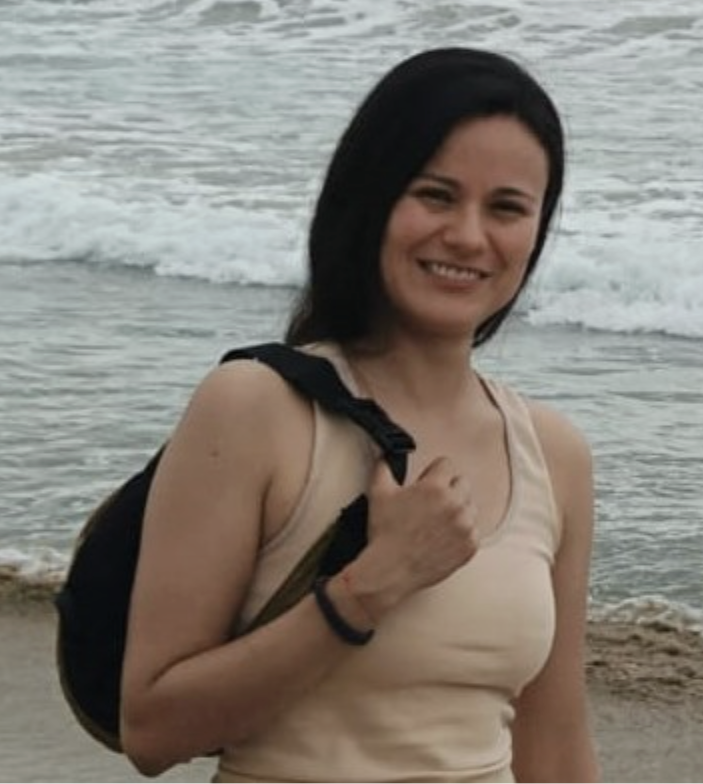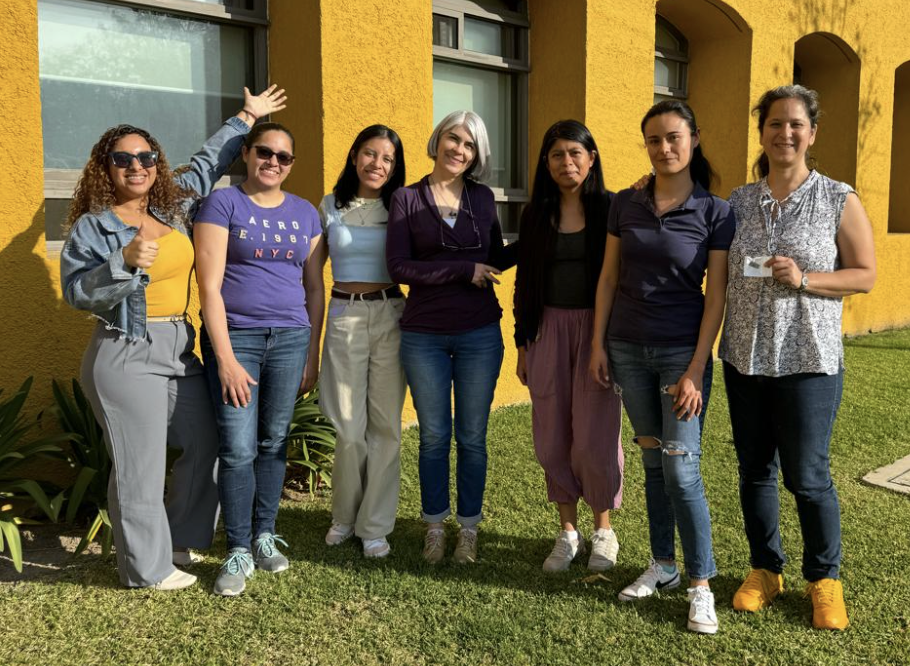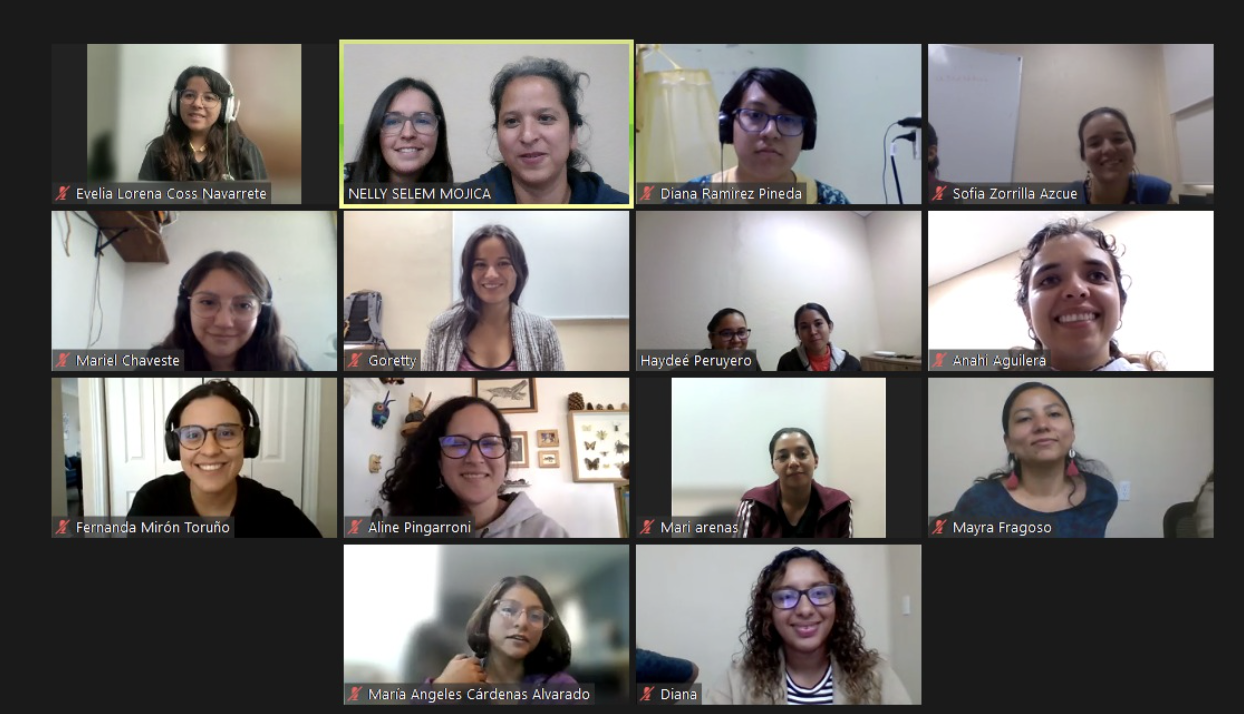Goretty Mendoza, the organizer of the R-Ladies Morelia, recently spoke to the R Consortium about her experience with the group and her work using R in molecular biology. Under her guidance, the group has grown into a supportive space for women from diverse fields, focusing on building R skills, sharing knowledge, and fostering collaboration. Goretty is committed to empowering the local R community through online and physical events that encourage learning and networking.

Please share about your background and involvement with the RUGS group.
I am a PhD student specializing in molecular biology, focusing on endophytic fungi. My work involves high-throughput sequencing, particularly amplicon sequencing, to study microbiomes.
I started using R during my PhD. Initially, I practiced independently through online courses, but then I discovered an R-Ladies community. The group was just starting in my city, so I took the opportunity to join. Attending the meetings helped me overcome my fear of working with R and allowed me to improve my skills. Gradually, I became more involved, and a few months ago, we had the opportunity to hold a face-to-face meeting with some members of our R-Ladies community who live in other cities, thanks to the R Consortium’s grant. I’m sure we returned home more motivated, knowing we all aim to improve our R skills.

Can you share what the local R community is like?
Our local R community is a group of enthusiastic women from various fields. Most of us come from science, mainly mathematics or biology, but we also have members from areas like finance or economics interested in learning R. At the start of each semester, we meet to share our interests and goals for the upcoming months. During our face-to-face meetings, we enjoy coffee and cookies, which create a welcoming atmosphere. A key focus of our group is ensuring that those with more experience in R share their knowledge with new members who are just starting. It creates an environment where everyone can learn and grow together. Our R-community is a great opportunity to get involved, collaborate with other women, and make new friends as we learn.

Please share about a project you are working on or have worked on using the R language. What is the goal/reason, result, or anything interesting related to your industry?
I’m pursuing my PhD, and R is a tool I use almost daily. For example, I use R for a project involving the study of endophytic associations in different temperate oak species of Mexico. To this end, we initially explored the functional leaf traits of these oak species, and I had to learn different R packages for this project, such as data manipulation and visualization (e.g., dplyr and ggplot2). Additionally, I used specialized packages like ‘TPD’ to calculate metrics related to functional diversity studies and ‘hypervolume’ to calculate climatic niches.
Our study aimed to determine if a functional niche partitioning between two evolutionary groups of oaks allowed them to coexist. We conducted a functional niche analysis and graphical visualization using R and the packages above. An interesting finding was that the analysis suggested differences in functional similarity among the groups, indicating evidence of functional niche partitioning and resource gradients.
These studies are crucial for conservation efforts and guide the development of management practices supporting temperate forests’ long-term health and resilience.
What resources/techniques do/did you use? (Posit (RStudio), Github, Tidyverse, etc.)
Is this an ongoing project? Please share any details or CTA for who should get involved!
Among the various R packages I used, some are for data manipulation and visualization, such as dplyr and ggplot2, and others more specialized, like TPD for calculating metrics used in functional diversity studies, hypervolume for constructing functional niches, and ecospat to calculate climatic niche overlap indices.
We extensively utilized GitHub repositories, ensuring that all the scripts were well-documented to allow others to reproduce the analyses easily. Our ongoing project on endophytic fungi associated with oaks is crucial as a first approximation for understanding the complex interactions between fungi and their host plants.
The concept of hidden diversity is a novel and intriguing area that we are just beginning to explore. For those interested in diving deeper into this field, there are several ways to get involved. You can join professional networks in microbial ecology or engage with the field of computational biology through organizations and online communities. Additionally, participating in conferences, workshops, and collaborations with researchers and professionals in the field offers valuable opportunities to contribute to current research.
What trends do you currently see in R language and your industry? Are there any trends you see developing in the near future?
In metagenomics, one of the key trends is the development of massive datasets generated by next-generation sequencing (NGS). It has enabled a deeper and more detailed analysis of microbial communities and their diversity and functions. In this context, R remains an essential tool for statistical analysis and data visualization with specialized libraries like phyloseq and vegan.
However, given the complexity of metagenomic data, other programming languages like Python and Bash are becoming indispensable. In the near future, the use of interdisciplinary workflows that combine R, Python and Bash will continue to grow, along with the development of more integrated tools to manage large datasets. Additionally, we can expect an increased use of artificial intelligence and machine learning to analyze these data.
How do I Join?
R Consortium’s R User Group and Small Conference Support Program (RUGS) provides grants to help R groups organize, share information, and support each other worldwide. We have given grants over the past four years, encompassing over 68,000 members in 33 countries. We would like to include you! Cash grants and meetup.com accounts are awarded based on the intended use of the funds and the amount of money available to distribute.